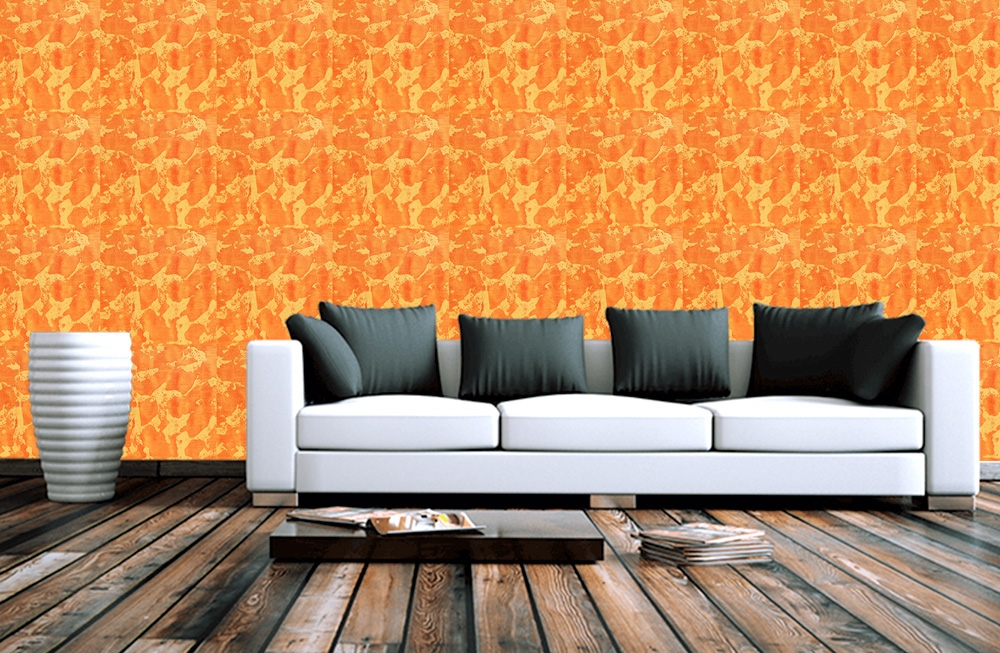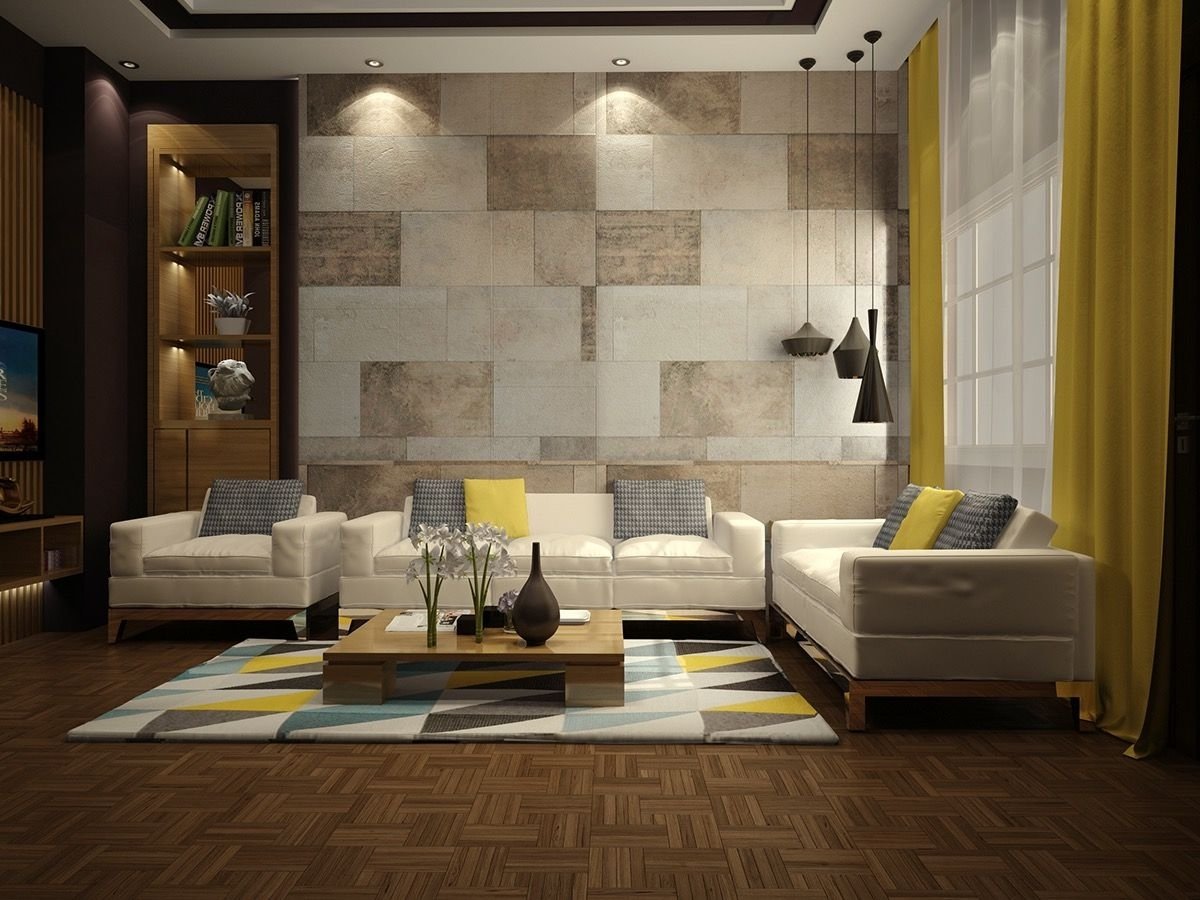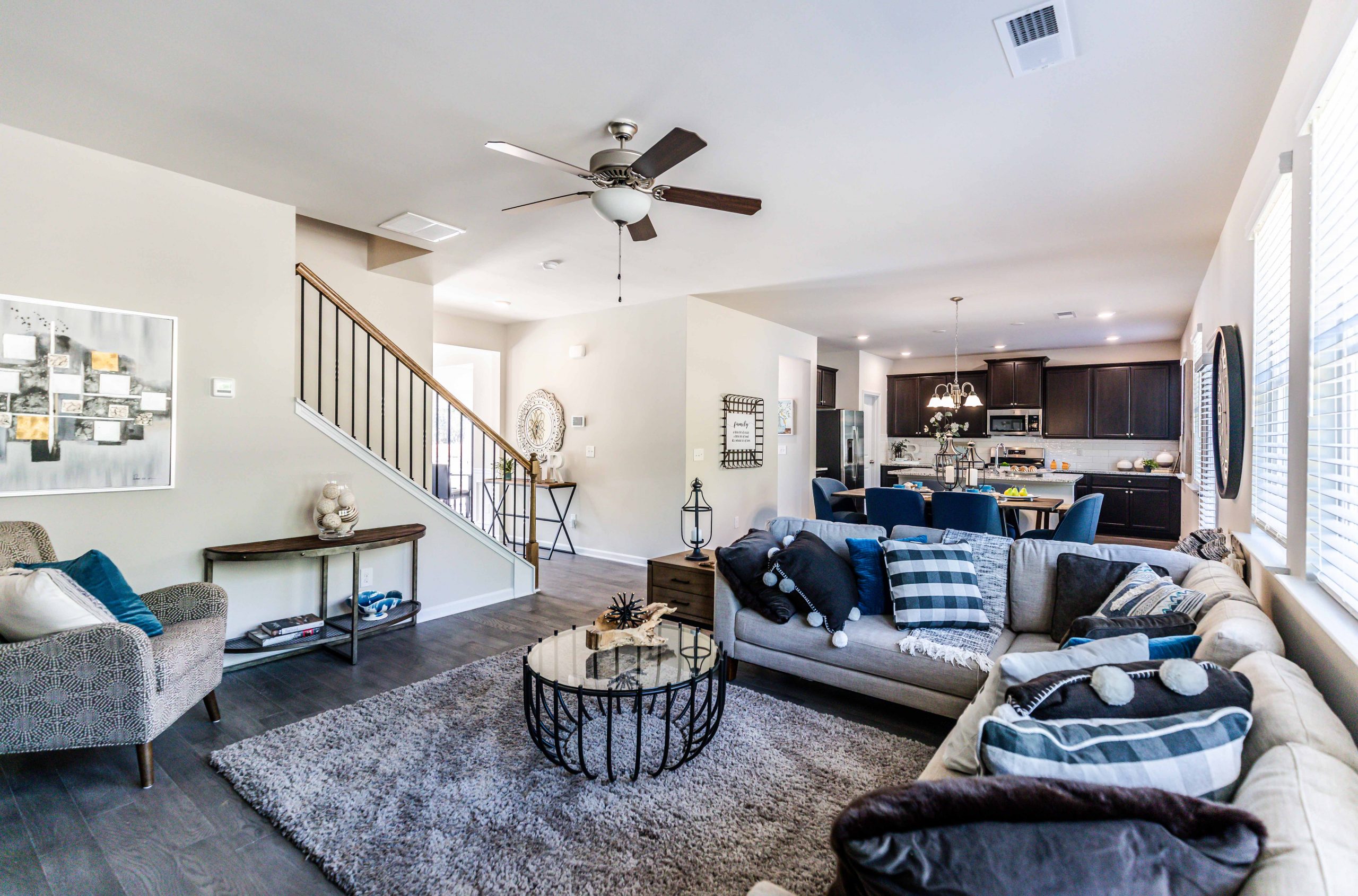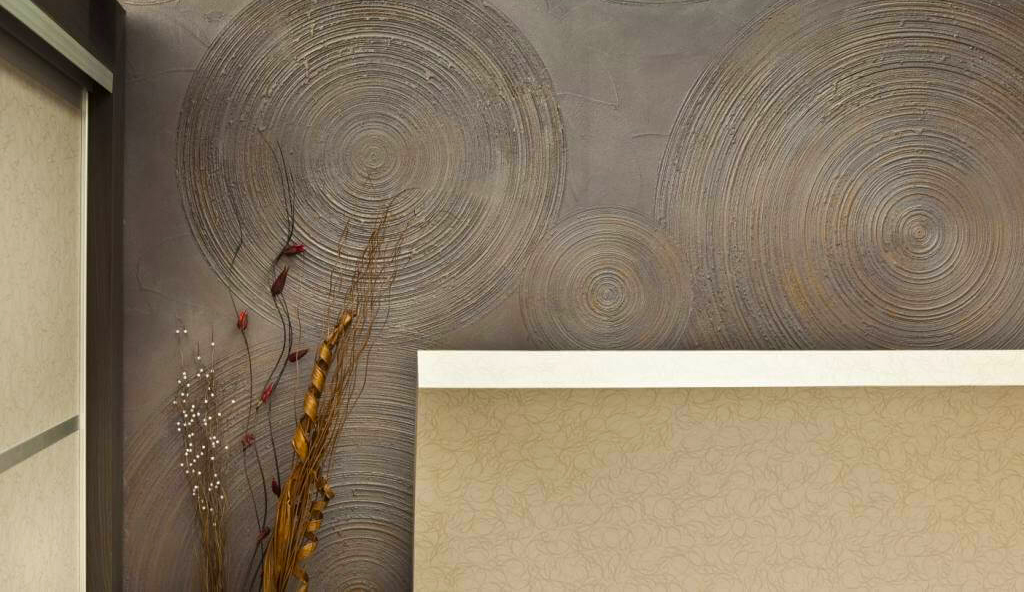The living room is often considered the heart of the home, and it's where we spend most of our time with family and friends. As such, it's important to create a space that is not only visually appealing but also reflects our personal style and personality. One way to add interest and character to your living room is by incorporating textured walls. These walls can add depth and dimension to the room, making it feel more cozy and inviting. Here are 10 ideas and inspiration for using textured walls in your living room design.Textured Walls in Living Rooms: Ideas and Inspiration
There are various ways to incorporate textured walls into your living room design, depending on your style and budget. One option is to use paint techniques, such as sponging or stenciling, to create a textured effect on your walls. Another option is to use wallpaper, which comes in a variety of textures and patterns. You can also opt for more permanent options like adding textured stone or brick walls. Whichever method you choose, make sure it complements the overall theme and color scheme of your living room.How to Incorporate Textured Walls in Your Living Room Design
1. Wallpaper: As mentioned earlier, wallpaper is a great way to add texture to your living room walls. You can choose from a variety of patterns, ranging from subtle to bold, to create a unique and eye-catching look. For a more natural and organic feel, opt for grasscloth or bamboo wallpaper. 2. Exposed Brick: Exposed brick walls are a popular choice for adding texture to a living room. They add a rustic and industrial touch to the space and can be left in their natural state or painted over for a more polished look. 3. Wood Paneling: Wood paneling is another classic way to add texture to your walls. You can choose from a variety of wood types and finishes to create a warm and inviting atmosphere in your living room. 4. Stone Walls: For a more dramatic and luxurious feel, consider adding textured stone walls to your living room. This can be achieved using real stone or faux stone panels, which are more budget-friendly and easier to install. 5. Textured Paint: As mentioned earlier, using paint techniques like sponging or stenciling can add texture to your walls. You can also opt for textured paint, which comes in a variety of finishes, from smooth sand to coarse stone. 6. Fabric Panels: Fabric panels are a creative and budget-friendly way to add texture to your walls. You can use fabric of your choice, such as linen or velvet, and stretch it over a wooden frame to create a unique and textured wall art. 7. Wainscoting: Wainscoting is a traditional wall treatment that involves adding wooden panels to the lower half of the walls. It not only adds texture but also adds visual interest and can help protect your walls from wear and tear. 8. Textured Tiles: Another option for adding texture to your walls is by using textured tiles. You can choose from a variety of materials, such as ceramic, porcelain, or natural stone, and opt for a textured finish like ribbed or pebble. 9. Molding: Molding is a great way to add texture and depth to your walls. You can opt for simple crown molding or get creative with different patterns and designs. You can also paint the molding in a contrasting color to make it stand out. 10. Wall Decals: Wall decals are an easy and temporary way to add texture to your walls. They come in a variety of designs and patterns, from geometric shapes to floral motifs, and can be easily removed without damaging your walls.10 Ways to Add Texture to Your Living Room Walls
Wall decor plays a crucial role in creating a cozy and inviting living room. By choosing the right pieces, you can add texture and interest to your walls while also reflecting your personal style. For example, you can opt for a large woven wall hanging to add texture and a bohemian touch to your living room. You can also hang a gallery wall of different textures, such as framed fabric swatches, metal signs, and layered frames, to create a unique and eclectic look.Creating a Cozy and Textured Living Room with Wall Decor
While textured walls are often associated with traditional or rustic styles, they can also make a statement in a modern living room. The key is to choose the right type of texture and keep the rest of the room sleek and minimalistic. For example, you can opt for a concrete accent wall or a geometric patterned wallpaper to add texture and contrast in a modern living room.The Impact of Textured Walls in a Modern Living Room
Wallpaper is a versatile and budget-friendly option for adding texture to your living room walls. As mentioned earlier, you can choose from a variety of patterns and textures to create a unique and personalized look. You can also mix and match different wallpaper designs, such as a textured wallpaper for a feature wall and a subtle pattern for the rest of the walls.Using Wallpaper to Add Texture to Your Living Room Walls
If you have a small living room, incorporating textured walls can help create the illusion of depth and space. For example, a striped wallpaper can make the room feel taller, while a textured stone or brick wall can add visual interest and make the room feel larger. Just make sure not to overwhelm the space with too many textures, as it can make the room feel cluttered.Maximizing Small Living Spaces with Textured Walls
Rustic style is all about natural elements and textures, and what better way to achieve this look than with textured stone walls? Whether you opt for a full accent wall or just a small section, textured stone walls can add a cozy and natural touch to your living room. You can also pair it with other rustic elements like wooden beams and vintage decor for a truly rustic look.Creating a Rustic Living Room with Textured Stone Walls
While minimalist living rooms are known for their clean and simple look, adding textured walls can help soften the space and add visual interest. You can opt for a subtle textured wallpaper or a simple wood paneling to add texture without overwhelming the room. You can also add texture through decor elements like a textured rug or woven wall hanging.Incorporating Textured Walls in a Minimalist Living Room Design
If you're feeling creative and want to add texture to your walls through paint, here are some tips to keep in mind: 1. Prep the Walls: Make sure to clean and prime your walls before painting. This will help the paint adhere better and give you a smoother finish. 2. Choose the Right Paint: Opt for a textured paint or add a texture additive to your paint. You can also choose a paint color that has a subtle sheen to create a textured effect. 3. Use Tools for Texture: You can use various tools like sponges, stencils, and even crumpled plastic bags to create different textures on your walls. 4. Practice on a Sample Board: Before painting your walls, practice your technique on a sample board to see if you like the texture and if it's the desired effect you're going for. 5. Be Patient: Painting textured walls can take longer than painting smooth walls, so be patient and allow the paint to dry completely between coats. In conclusion, textured walls can add depth, character, and visual interest to your living room. With the right materials and techniques, you can create a unique and personalized space that reflects your style and personality. Whether you opt for a permanent option like stone walls or a temporary option like wallpaper, textured walls are sure to make a statement in your living room.How to Paint Textured Walls in Your Living Room
Create a Unique and Cozy Space with a Living Room Featuring Textured Walls

Enhance the Aesthetic Appeal of Your Living Room
 When it comes to designing your living room, there are endless possibilities to make it stand out. From choosing the right furniture to selecting the perfect color scheme, every element plays a crucial role in creating a space that reflects your style and personality. However, one design element that is often overlooked but can add a unique touch to your living room is textured walls.
Textured walls
not only add depth and dimension to the room but also create a warm and inviting atmosphere. Let's explore how you can transform your living room into a cozy and stylish space with textured walls.
When it comes to designing your living room, there are endless possibilities to make it stand out. From choosing the right furniture to selecting the perfect color scheme, every element plays a crucial role in creating a space that reflects your style and personality. However, one design element that is often overlooked but can add a unique touch to your living room is textured walls.
Textured walls
not only add depth and dimension to the room but also create a warm and inviting atmosphere. Let's explore how you can transform your living room into a cozy and stylish space with textured walls.
Choose from a Variety of Textures
 One of the best things about textured walls is the wide range of options available. You can choose from
brick, stone, wood, plaster, or even fabric
to add texture and character to your walls. Each texture brings a different feel to the room, so it's essential to consider the overall aesthetic you want to achieve. For a rustic and earthy vibe, brick or stone walls are perfect, while a more modern and sophisticated look can be achieved with wood or fabric textures.
One of the best things about textured walls is the wide range of options available. You can choose from
brick, stone, wood, plaster, or even fabric
to add texture and character to your walls. Each texture brings a different feel to the room, so it's essential to consider the overall aesthetic you want to achieve. For a rustic and earthy vibe, brick or stone walls are perfect, while a more modern and sophisticated look can be achieved with wood or fabric textures.
Play with Colors and Patterns
 In addition to the various textures, textured walls also offer the opportunity to experiment with colors and patterns. You can choose to paint the textured walls in a solid color to create a subtle yet striking effect. For a more dramatic look, consider using a bold color that complements the rest of the room. Another option is to use wallpaper with a textured design, which adds both color and pattern to the walls. This allows you to create a unique and personalized look for your living room.
In addition to the various textures, textured walls also offer the opportunity to experiment with colors and patterns. You can choose to paint the textured walls in a solid color to create a subtle yet striking effect. For a more dramatic look, consider using a bold color that complements the rest of the room. Another option is to use wallpaper with a textured design, which adds both color and pattern to the walls. This allows you to create a unique and personalized look for your living room.
Consider the Lighting
 Lighting plays a crucial role in highlighting the texture of your walls.
Wall sconces, recessed lighting, or track lighting
can be strategically placed to illuminate the textured walls and create a stunning visual impact. This not only adds to the overall ambiance of the room but also draws attention to the unique textures and patterns on the walls.
Lighting plays a crucial role in highlighting the texture of your walls.
Wall sconces, recessed lighting, or track lighting
can be strategically placed to illuminate the textured walls and create a stunning visual impact. This not only adds to the overall ambiance of the room but also draws attention to the unique textures and patterns on the walls.
Bring in Complementary Decor
 To truly make your living room with textured walls stand out, it's essential to bring in complementary decor. This can include
textured throw pillows, rugs, or curtains
that add to the overall texture of the room. You can also incorporate natural elements like plants or wood accents to enhance the cozy and inviting feel of the space.
In conclusion, textured walls are a simple yet effective way to add personality and character to your living room. With a variety of textures, colors, and patterns to choose from, you can create a unique and visually stunning space that is both cozy and stylish. So, why settle for plain and boring walls when you can transform your living room into a textured paradise?
To truly make your living room with textured walls stand out, it's essential to bring in complementary decor. This can include
textured throw pillows, rugs, or curtains
that add to the overall texture of the room. You can also incorporate natural elements like plants or wood accents to enhance the cozy and inviting feel of the space.
In conclusion, textured walls are a simple yet effective way to add personality and character to your living room. With a variety of textures, colors, and patterns to choose from, you can create a unique and visually stunning space that is both cozy and stylish. So, why settle for plain and boring walls when you can transform your living room into a textured paradise?



































:max_bytes(150000):strip_icc()/Cozy-living-room-with-vaulted-ceiling-589fb14d3df78c4758a5523e.png)
/Living-room-with-plaid-and-leather-furniture-589faf575f9b58819cb3fb05.png)


































































